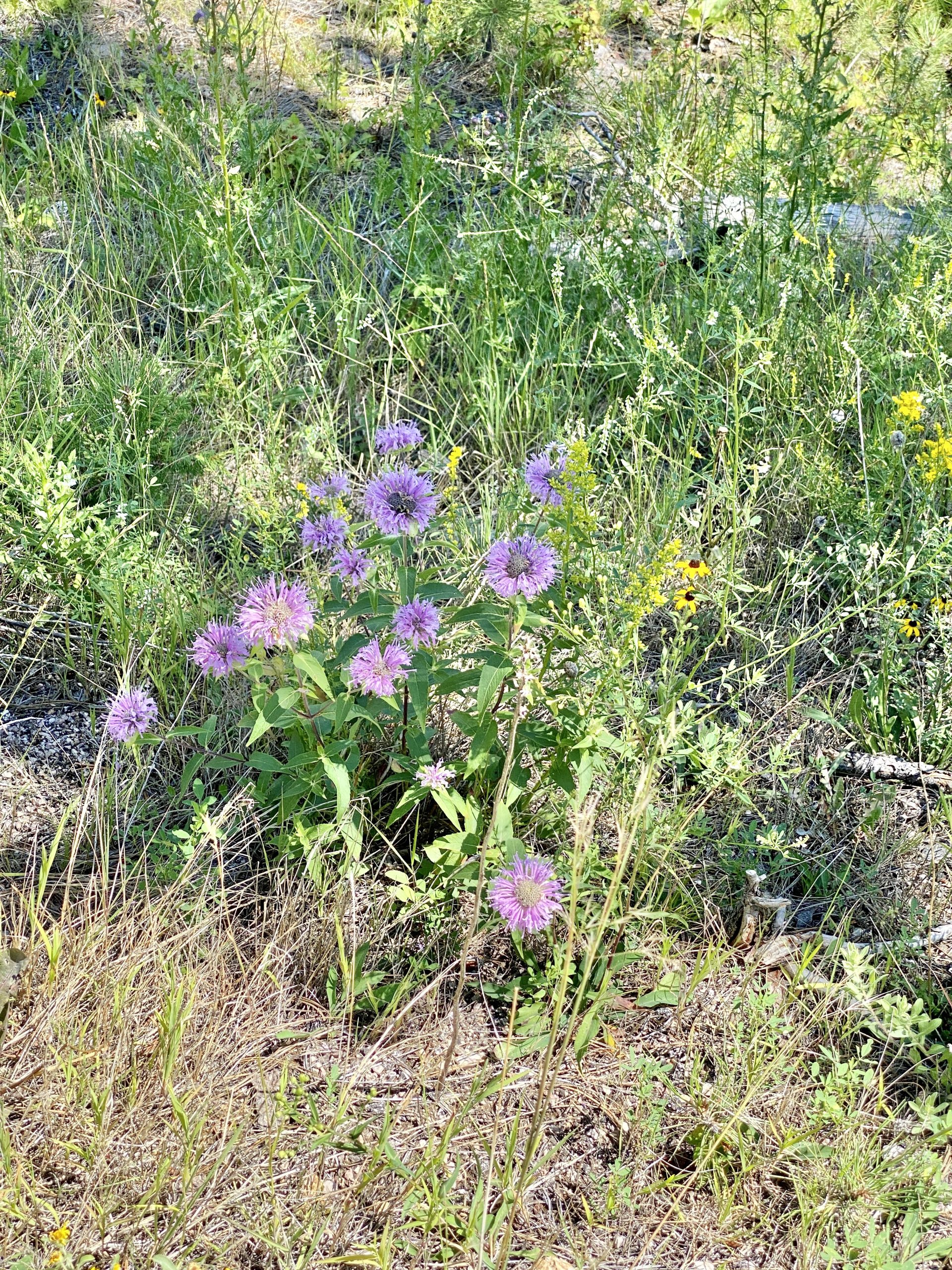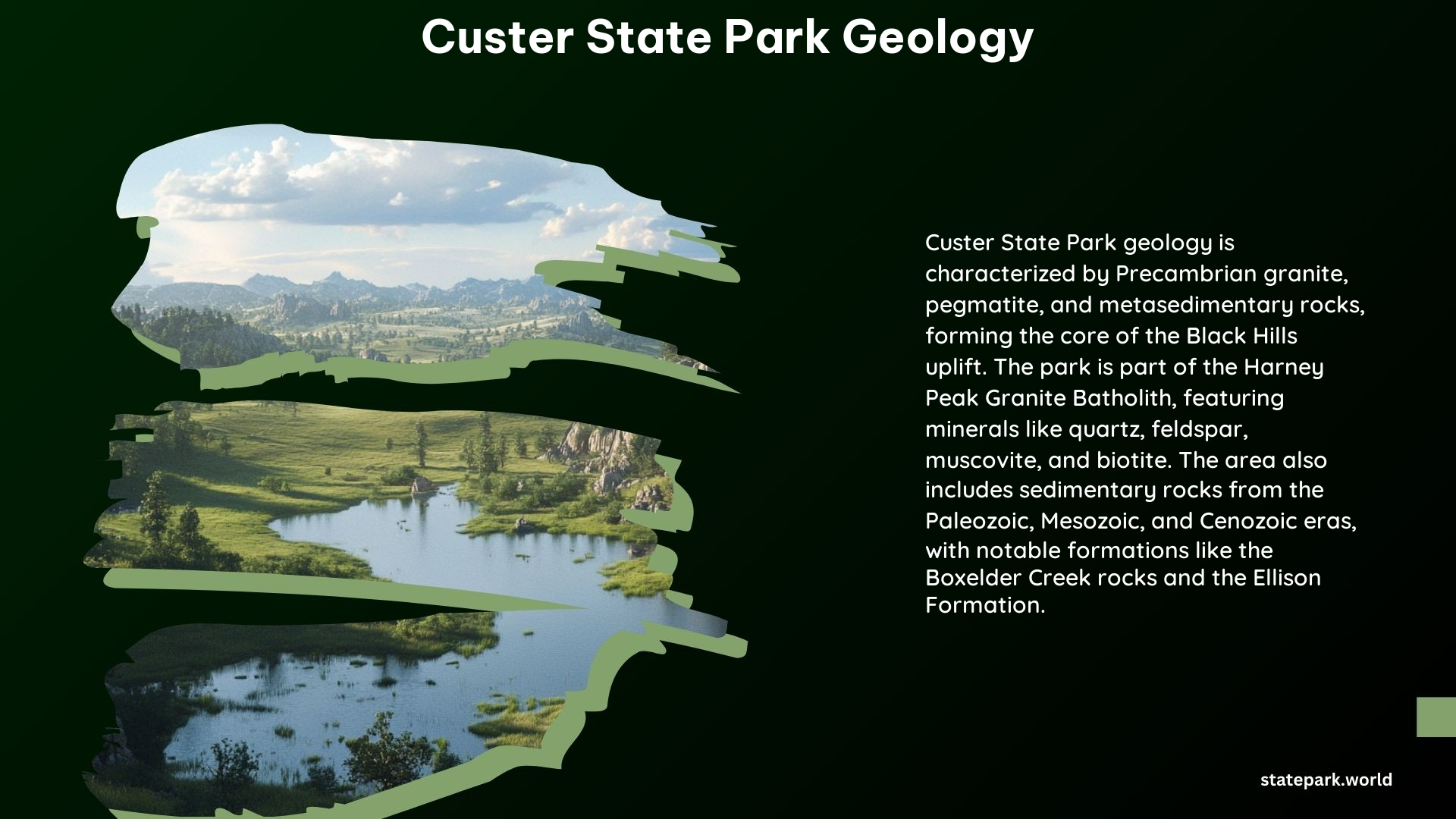Custer State Park, nestled in the heart of the Black Hills of South Dakota, is a geological wonderland that captivates visitors with its dramatic landscapes, unique rock formations, and rich history. From the towering granite spires of the Needles to the ancient Precambrian rocks that form the core of the park, the geology of Custer State Park is a testament to the powerful forces that have shaped this remarkable region over billions of years.
Primary Geological Features of Custer State Park

Custer State Park’s geology is characterized by several key features:
-
Granite Outcroppings: The park is renowned for its granite outcroppings, particularly in the Needles Spires area. These ancient granite formations are part of the Harney Peak Granite Batholith, which was formed over two billion years ago and is the core of the Black Hills uplift.
-
Precambrian Rocks: The park’s geology is dominated by Precambrian rocks, including granite, pegmatite, and metasedimentary rocks. These rocks are among the oldest in the Black Hills, dating back over two billion years.
-
Pegmatite Dikes: The granite in the park contains pegmatite dikes, which formed when magma intruded into the granite. These dikes are rich in minerals such as quartz, feldspar, muscovite, and biotite.
-
Metasedimentary Rocks: The park also features metasedimentary rocks, which were formed from sedimentary rocks that were subjected to high pressure and temperature, causing them to metamorphose into new rock types.
How the Granite Outcroppings Contribute to the Park’s Scenic Beauty

The granite outcroppings in Custer State Park, particularly in the Needles Spires area, are a major contributor to the park’s stunning scenic beauty. These unique landforms have been sculpted by millions of years of erosion, creating a dramatic and picturesque landscape that captivates visitors.
-
Unique Landforms: The granite outcroppings have been eroded into a variety of striking shapes and formations, including spires, pinnacles, and towers, which add to the park’s visual appeal.
-
Scenic Hiking Trails: The park’s trails, such as the Cathedral Spires Trail, offer breathtaking views of the granite outcroppings and the surrounding landscape, making it a popular destination for hikers and nature enthusiasts.
-
Wildlife Habitat: The granite outcroppings and the surrounding landscape provide a diverse habitat for a range of wildlife, including bison, elk, and deer, which can be observed by visitors.
The Role of Black Hills Geology in Shaping the Park’s Landscape
The geology of the Black Hills has played a crucial role in shaping the landscape of Custer State Park over millions of years. This process has been driven by several key factors:
-
Uplift and Erosion: The Black Hills were formed by an uplift that occurred near the end of the Cretaceous Period or the beginning of the Paleogene Period, about 65-70 million years ago. This uplift created an elliptical dome, which has since been eroded by wind and water, shaping the park’s landscape.
-
Geological Layers: The park’s geology is characterized by a series of geological layers, with the oldest rocks at the center and progressively younger rocks towards the periphery. This layering is evident in the park’s landscape, with different rock types and formations visible at different elevations.
-
Water and Wind Erosion: The park’s landscape has been further shaped by the erosive forces of water and wind, which have carved out valleys, created unique landforms, and exposed the underlying geology.
Additional Information
- Park Hours: Custer State Park is open year-round, but hours vary depending on the season. From April 30 to October 31, the park is open from 6:00 AM to 11:00 PM. From November 1 to April 29, the park is open from 8:00 AM to 5:00 PM.
- Admission Fees: The park charges an entrance fee of $20 per vehicle for a 7-day pass. Annual passes are also available for $30.
- Guided Tours: The park offers guided tours, including a scenic drive tour and a wildlife tour, which provide visitors with a deeper understanding of the park’s geology, history, and wildlife.
Custer State Park’s unique geology is a testament to the powerful forces that have shaped the Black Hills over billions of years. From the towering granite spires to the ancient Precambrian rocks, the park’s geological features contribute to its stunning natural beauty and make it a must-visit destination for anyone interested in the fascinating history of the Earth.
References:
- Moon Travel Guides. (n.d.). Geography and Geology of the Black Hills. Retrieved from https://www.moon.com/travel/trip-ideas/geography-geology-black-hills/
- Digital SD. (n.d.). The geology, mineralogy, and scenic features of Custer State Park, South Dakota. Retrieved from https://explore.digitalsd.org/digital/collection/sdsmt/id/89864/
- Digital SD. (n.d.). The geology, mineralogy, and scenic features of Custer State Park, South Dakota. Retrieved from https://explore.digitalsd.org/digital/collection/sdsmt/id/89905/
- SERC – Carleton. (2006, June 16). Geology and Physiography of the Black Hills. Retrieved from https://serc.carleton.edu/research_education/nativelands/pineridge/geology1.html
